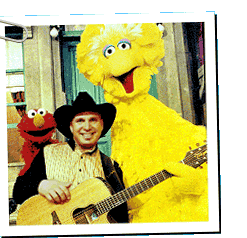
Day 1 - Setting up the classroom community
See lesson plan
Day 2 - Rural Communities
This lesson includes a discussion
about what a rural community is like. The children will better understand
what it is
like to live in a community
such as this, and what the important roles are in a rural area. Cut
and color rural
worksheets:
29, 35-37.
Day 3 - Small Towns
Students will learn about
how a small town functions, and the people who make it work. They
will make
strong connections to our
own classroom community. Cut and color small town worksheets:
32-35, 37.
Day 4 - Cities and Transportation
This lesson will compare
and contrast the other two types of communities to life in the city.
The students will also
learn about transportation
and how it affects the way we live. Cut and color city / transportation
worksheets:
32-34, 38-39, 41-43.
Day 5 - Bulletin Boards
The students will get
into groups and design a bulletin board on a particular type of community
we have
discussed using the
worksheets we have done on various days. Example Bulletin Board:
worksheet 14.
Day 6 - Author-Illustrator Study
See lesson plan
Day 7-9 - Community Action Study (Worksheet 30)
1. Students will draw
issues (previously discussed in class) out of a hat. Students will
create a simple flier dealing
with the issue.
2. Students will be grouped into 6 per issue. Each group will produce an organized plan for a petition.
3. Students will be
grouped again and will be assigned a scenario dealing with one of the issues.
Each group
will interview the community
via a press release on their issue.
Day 10 - DRTA
See lesson plan
Day 11 - Community Service / Volunteer Study
The students will fill out
a survey on community service. Go over questions such as: What
is a volunteer? Why do
people volunteer?
Where and how can you volunteer?
This activity will prepare
the students for the upcoming speaker week, in which 4 volunteers from
the community
will come in and speak to
the class.
Day 12 -15 - Speaker Week
During the next four days,
people from various organizations within the community will come in and
speak to the
class. Students will
have the opportunity to ask questions and learn about these organizations.
1. 4-H: The speaker will discuss what the 4-H does and will provide examples of ways students could get involved.
2. Habitat for Humanity:
A representative will come in and give a brief overview of the program,
how it began,
and whom it benefits.
3. Meals on Wheels:
Contact the local Meals on Wheels program and ask a volunteer to come and
speak
about the importance of
the program. Also, they would speak about why they volunteered and
what it has done
for them.
4. Humane Society:
A volunteer comes to speak about the reasons community volunteers are so
crucial to the
program. Also, to
discuss the purpose of the Humane Society as a whole.
Day 16 - Volunteer Worksheet (worksheet 60-61)
Have students think about
a time when they volunteered for something. What did they do?
Who did it help? Why
did they volunteer?
Then have them complete the survey. Were they good volunteers?
What could they have done
better to be a better volunteer,
or what could others do?
Day 17-19 - Internet lesson plan
Day 20 - Walking Tour of the Community
Students will spend a day
walking through town. Speakers in various buildings (Town Hall,
Police Department,
Fire Department, and hospital)
will talk to the kids about their role int he community. Lunch will
be a picnic at the
local park. This field
trip will conclude the "People in our Comunity" unit.
Sometime within the unit, eduactional television could be brought in
the supplement the day's activities. Shows such as Sesame Street
are always talkign about communities and community service. These
types of programs would fit perfectly into a discussion on community responsibilty.
